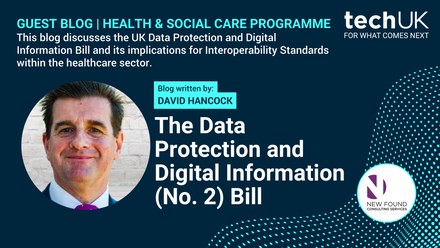Geospatial Data and transforming the UK's approach to transportation

Geospatial data has, for years, held the power to transform a huge range of industries. But thanks to siloed information and a lack of historical coordination between the public and private sectors, its true value is only just beginning to be unlocked.
Nowhere is that more true than on our roads.
We’ve known for decades about the existence of geospatial data related to items such as planned traffic disruptions, streetworks, or events on the road network. The data has been painstakingly compiled in a variety of places – in road cameras, in works permits held by local authorities, and in traffic management plans created by businesses, to name just a few. Yet sometimes, despite the encouraging proliferation of GIS and asset registries, those locations are where it has stayed.
What does that siloing mean in practice? To start with, anyone planning streetworks or an event on the road network – think cycle tours, marathons, film sets, street parties – has had to rely on already-overloaded local authorities to ensure that diversions they create don’t cause massive backlogs of traffic, risks to both pedestrians and drivers, and serious annoyance from busy commuters. That’s even more true for businesses (not to mention local authorities themselves) who need to dig up the road: without a single source of truth for road data, streetworks management becomes a series of shots in the dark. That poses serious risks to road users.
When set out like this, the need for transformation is clear. And we’ve found that the road and streetworks industries feel the same: they’re only too happy to share data about their activities, because it’s part of their job to keep the public and other stakeholders informed about what’s going on.
Of course, we’re biased in a way: this kind of multilateral data-sharing means businesses like our own can do much more exciting things. Deploying that information lets us illuminate historical traffic behaviour, and pioneer predictive analytics, so users can discover what the future may look like. But we wouldn’t be in business if tools like this weren’t useful to the road and streetworks communities. And, indeed, we’re lucky enough to say that the vast majority of UK highway authorities use them on a regular (often daily) basis.
So far, so simple. But this account misses one of the most important issues in data access; specifically policy. Careful data governance is essential to protect individuals, but a balance must be struck between that protection and the benefits that come with open data. We are fortunate, in the UK, to have a Department for Transport and sub-national transport bodies that agree, and indeed work hand in hand with the private sector to achieve transparency. Transport for London in particular has been vocal about the need for good data to underpin mobility and infrastructure changes.
It’s also reassuring to see our friends in Europe prioritise data-sharing for the sake of mobility tech: MMfE, or Micromobility For Europe, has made a point of identifying consistent data standards as essential to innovation in cities. Sharing and structuring geospatial data coherently will be indispensable to creating intelligent mobility systems.
It’s important, however, to keep in mind that geospatial data isn’t just an issue for buzzy new e-scooter startups. The technology behind it is essential for organisations that underpin our national infrastructure – utility companies, contracting and construction businesses, and of course our own local authorities. Without accurate, cohesive geospatial data sharing, these organisations are left relying on outdated and fallible systems, vulnerable to human error and miscommunication.
And that has real-world safety implications. If drivers don’t have a source of information about upcoming roadworks, they miss them. If multiple sets of streetworks are scheduled to take place on the same stretch of road, construction workers and engineers are put at risk. We need a clear view of what’s happening on UK streets. Geospatial data, when carefully structured, aggregated, and digitally presented, provides just that. As technology-led businesses, it’s our job to protect and preserve shared, transparent access to that information.

Laura Foster
Laura is techUK’s Associate Director for Technology and Innovation.








